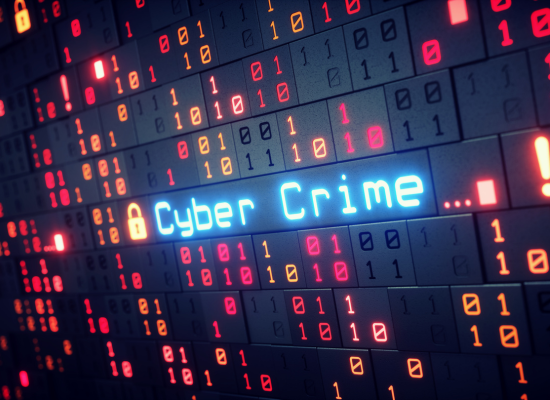Cyber Crime Investigation
CYBER CRIME INVESTIGATION- BEST IN MAHARASHTRA
CYBER CRIME INVESTIGATION INCLUDES DIFFERENT KINDS OF INVESTIGATIONS:
We help our business and individual clients identify abusive emails and take the appropriate action to stop the threat. Our services help organisations prevent any regular computer failures caused by the malware attached to the email. In order to e-book the offenders, we also work with the criminal government on behalf of our clients. Unsolicited or abusive mail has become more common on the internet. While the majority of them are safe, some include malware, such as viruses or adware, and clicking on them could result in serious problems. These horrifying emails are sent with a label made specifically for that purpose, and according to an online course, regular users are almost unable to read them. These days, spam is distributed by software called spambots, which are designed to send out such harmful statistics. In order to start the mailing process, the bots generate fictitious bills that cannot be tracked back to them.
The fake bills increase in number in proportion to the diversity of messages that need to be sent. With multiple activities throughout the day, it is not possible for average individuals to keep track of all these email addresses. Spambots and web crawlers gather email addresses from various respondents on the internet, usually without authorization. These can also include online groups, chat rooms, websites, forums, blogs, wikis, specific newsgroups, visitor books, newsletters, or update recipients, among many other things. After being gathered, the email addresses are either used by each person to send unsolicited mail of their own or are sent to various dubious organisations that require such messages to be sent.
The primary factor contributing to the increase of unsolicited emails is the simple coding design of all emails, which makes them incredibly streamlined for the purpose of utilising simple software. The harmful programmes employ a variety of strategies to hide their activities. In good cases, they conceal their agreement to expose the identification notification in their unsolicited mail from someone who is also a recipient.
In addition to the typical unnecessary emails that appear in the inbox in large quantities and are generally harmless, there are other types of emails that are far more dangerous. These are specifically designed to be used by hackers or criminals to target an organisation or an individual. They contain malware that can cause havoc just by being obtained through the inbox. Among the issues they create are computer failures, malware spreading over a private network, data theft, which includes password and persistent user identification theft, and usage tracking. While monitoring user activities for the sake of customising and streamlining user interactions with websites is a common practice, tracking user behaviour for future malevolent use is illegal.
Tracking down every instance of such dishonest online activity requires intense knowledge of the internet, its infrastructure, and code. We employ a variety of techniques, such as email header analysis, to allude to the sender. Since every step or address in the instruction is recorded, the header includes the most information necessary to fine-tune the message. Our experts are also capable of determining whether a header has been altered in any way to trick the trackers. Additionally, we employ a variety of software tools to do analyses on the emails we receive, enabling us to identify the email’s specific source and direction. After identifying the source, we help our clients take all necessary action to prevent identity notifications from sending them any correspondence. When there is specific targeting, we work with regulation officers’ cybercrime units to apprehend the offenders and e-book them for criminal charges.
Tracing of Suspicious IP Addresses
We provide software and internet experts that can keep an eye on questionable IP addresses that are causing problems for our clients. We provide our solutions to every individual and business client, helping them to protect intellectual property, identify offenders, and bring legal action against them. IP addresses provide the specific region of any internet-connected item or community. These are binary numbers that are typically shown in a certain non-binary structure that is easily used by people. IP addresses are governed by two protocols: IPv4, which uses a 32-bit range to select a tool, and IPv6, which uses 128 bits. These codecs can help locate a computer and prevent it from accessing our clients’ devices. When a community of buildings shares a single IP address, keeping one tool from accessing a prone unit can effectively keep the others from accessing it as well. Thousands of computers and other devices share the same address after they share a web server, use the same proxy server, or use a shared address for translation.
Most of the time, a firewall that has been configured directly into a device or into every system that has been centred using a specific deal can easily stop a suspicious IP. This provides a strong shield until the people responsible for the violation are punished by illegal means. The region can also be blocked by using DNS entries to blacklist it. An extensive inventory of all questionable IP addresses that have been reported by users across the internet is included in databases that contain DNS blacklists. They have the ability to adjust various devices and their servers using both their IP address and the DNS method. At some point in our investigation into harmful structures, we test such lists to find out if the IP we’re analysing has previously been placed on a blacklist and investigate the names of the people behind the scenes. Before we cross-check it with the inventories, we also use email headers to find the required statistics.
We employ a variety of strategies to prevent unauthorised people from accessing the servers, computer systems, and communities of our clients. The design and coding of our professional’s customised programmes can allude to the source of such malevolent intent. In addition, we employ fashionable products made by collaborating with other builders to find the source. Our investigations help our clients avoid any specific interests that could disrupt their regular work or cause financial losses, as well as well-known fraudulent activities that are focused on a certain group of online users or in any other way.
We also help our clients and their solicitors put together a strong case against these people based only on genuine evidence that might be used in court. In order to apprehend the criminals and bring them to justice, we also collaborate with the various governments, which include the police and various cybercrime prevention officers. Because cybercrimes are relatively new, we focus on presenting all relevant information in the case, including any losses incurred due to work stoppage that could be used to persuade the judges to send the offenders to jail.
Ethical Hacking
Our team of ethical hackers can help our clients fix any security flaws or vulnerabilities in their systems and networks. Our solutions can help you avoid critical security disruptions, which can cause our clients to suffer significant financial losses.
1.Through ethical hacking, a company can identify the gaps in its systems that unethical hackers could use to their advantage and commit illegal acts. Because of the same elements, the experts handle the device inside in the same way and look for any opportunity to get beyond the existing safety mechanisms and gain unauthorised access. The process comprises unique, well-thought-out attacks that target every vulnerable component in the device and throughout the entire network. When they gain access, ethical hackers no longer cause any trouble; instead, they just document how they should be prevented in the future. The team develops a route map that evaluates each opportunity based on its susceptibility to attack and relevant significance.


2.When our team receives a request for help, they promptly adhere to a strict set of guidelines. First, we ascertain from the client what is necessary and why. We determine the specific and desired goals they must accomplish by posing pertinent questions about their desire for this kind of examination. After the clarifications are given, we look into the situation and make a plan to help us understand how vulnerable the network is to hackers. We discuss our approach with the customer and solicit their feedback, which we incorporate into the updated version. After the plan of action is decided upon, our team gets to work painting and using a variety of techniques to sneak in.
Among the tactics we employ are:
Vulnerability assessment
This involves doing a quick inventory of the entire gadget to identify any weak points. The process includes using anti-virus or malware safety software along with hardware and software programme checks. We also check the various ports on the device to see if strong firewalls are blocking access to them.
Collecting passwords
Collecting passwords should involve looking through internet blogs, forums, private messages, and other structures to see if the passwords are easily accessible. In certain cases, we assess the strength of the passwords using password-cracking software.
Phishing
Another method we employ to gain access is phishing, in which we create software that seems like a useful application and is permitted entry into the device through the firewall and anti-virus software. Once inside, the application may be employed to reveal all passwords and unsecure data that can easily be sent to outside parties.
Protocol analyzer
We employ those tools to extract information from statistics packets, including login credentials. Certain versions are made specifically for networks that employ Ethernet or Wi-Fi.
Rootkit
A more advanced technique used by hackers to get control over a device; it employs techniques that are generally undetectable and innocuous. We have chosen this option to see if the device is vulnerable to these kinds of attacks since they might remain undetectable in the past for a long period of time.
Malware checks
We also determine how vulnerable the device is to various types of malware, such as viruses, Trojan horses, adware, and keyloggers, among others. Because the goal of ethical hacking is to anticipate potential hacker actions and the kinds of dangerous computer programmes that could infiltrate a network, it is a complicated process.
